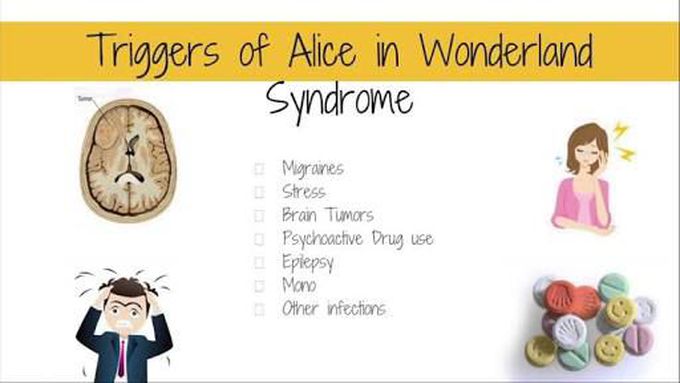
TI
Tanishq Iyerabout 8 years ago

Alice in wonderland syndrome / Todd's syndrome
Alice in Wonderland syndrome is a disorienting neuropsychological condition that affects perception. People experience size distortion such as micropsia, macropsia, pelopsia, or teleopsia. There is no treatment for Alice in Wonderland Syndrome. The best way to treat this condition is simply by helping the patient become more comfortable. For example, if the problem is caused by migraines, the treatment of the migraine itself may be the best way to alleviate Alice in Wonderland Syndrome symptoms
Other commentsSign in to post comments. You don't have an account? Sign up now!
Related posts
HyperekplexiaSymptoms of HyperekplexiaDandy Walker Malformation | Diagnosis symptoms and treatment2-Minute Neuroscience: Brain AneurysmsSeizures (Epilepsy) Nursing NCLEX: Tonic-Clonic, Generalized, Focal, SymptomsStroke: Causes, Risk Factors, Treatment, and Prevention | Mass General BrighamWendigo syndromeNeurofibromatosisAbsence seizuresSymptoms of absence seizures

